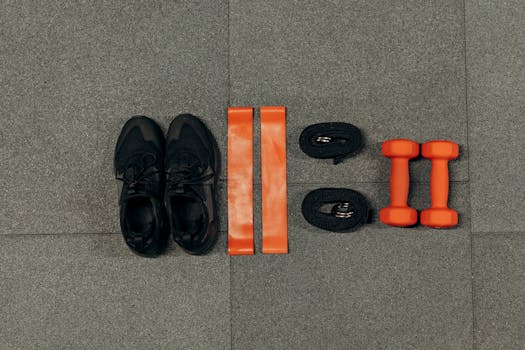
High-Intensity Interval Training (HIIT): The Ultimate Cardio Workout
Takeaways: High-Intensity Interval Training (HIIT) is a time-efficient cardio workout that alternates between intense bursts of activity and short recovery periods. It offers numerous health benefits, including improved cardiovascular fitness, increased calorie burn, and greater fat loss. Whether you’re a beginner or an experienced athlete, incorporating HIIT into your routine can elevate your fitness game.
What is High-Intensity Interval Training (HIIT)?

The concept of HIIT stems from the idea that pushing your body to its limits for brief periods followed by recovery allows you to burn more calories and improve your fitness level. Typically, a HIIT session lasts between 15 to 30 minutes, making it an ideal choice for those with busy schedules.
Benefits of HIIT

- Efficient Calorie Burn: HIIT can burn more calories in a shorter amount of time. Studies have shown that you can burn more calories during a 30-minute HIIT workout than during an hour of traditional cardio.
- Increased Metabolism: HIIT workouts can elevate your metabolism for hours after exercise, leading to more calories burned even at rest. This phenomenon is known as excess post-exercise oxygen consumption (EPOC).
- Improved Cardiovascular Health: Engaging in HIIT can enhance your cardiovascular fitness, helping your heart to work more efficiently.
- Fat Loss: HIIT is particularly effective for fat loss, as it can help reduce body fat while preserving lean muscle mass.
- Versatility: HIIT can be tailored to any fitness level and can include various exercises such as running, cycling, bodyweight movements, and more.
How to Get Started with HIIT
Starting a HIIT program can be straightforward, but it’s essential to approach it correctly to avoid injury and maximize benefits. Here’s a simple guide to get you started:
- Choose Your Exercises: Select a mix of cardio and strength exercises. Popular choices include sprinting, jumping jacks, burpees, and cycling.
- Determine Your Work-to-Rest Ratio: A common ratio is 30 seconds of high intensity followed by 30 seconds of rest. As you progress, you can adjust this to 20 seconds of work and 10 seconds of rest.
- Warm-Up: Always start with a proper warm-up to prepare your muscles and joints for the workout.
- Start Slow: If you’re new to HIIT, begin with shorter intervals and longer rest periods, gradually increasing the intensity as you become more comfortable.
- Cool Down: After your workout, take time to cool down and stretch to aid recovery.
Sample HIIT Workout
Here’s a simple HIIT workout you can try at home:
- Warm-up: 5 minutes of light jogging or dynamic stretching
- Workout: Repeat the following circuit 3-5 times:
- 30 seconds of burpees
- 30 seconds of rest
- 30 seconds of high knees
- 30 seconds of rest
- 30 seconds of mountain climbers
- 30 seconds of rest
- 30 seconds of squat jumps
- 30 seconds of rest
- Cool down: 5 minutes of stretching
Conclusion

For more information about HIIT and its benefits, check out these resources: Healthline – HIIT Benefits, Verywell Fit – What is HIIT?, and Men’s Health – HIIT Workout Guide.






